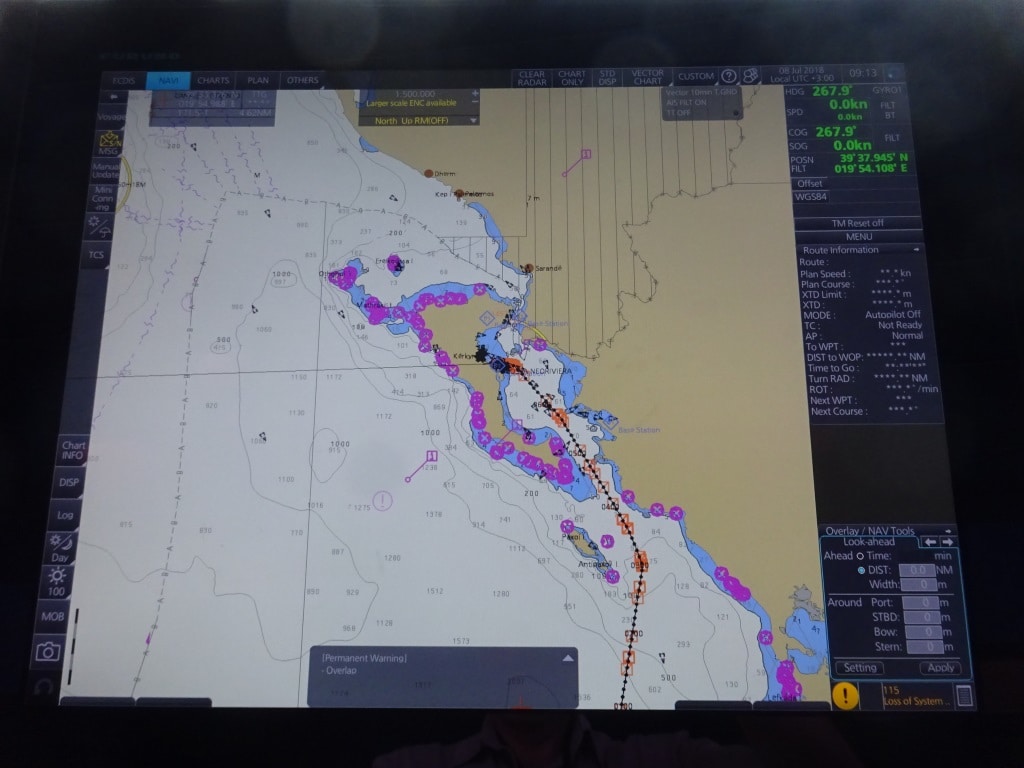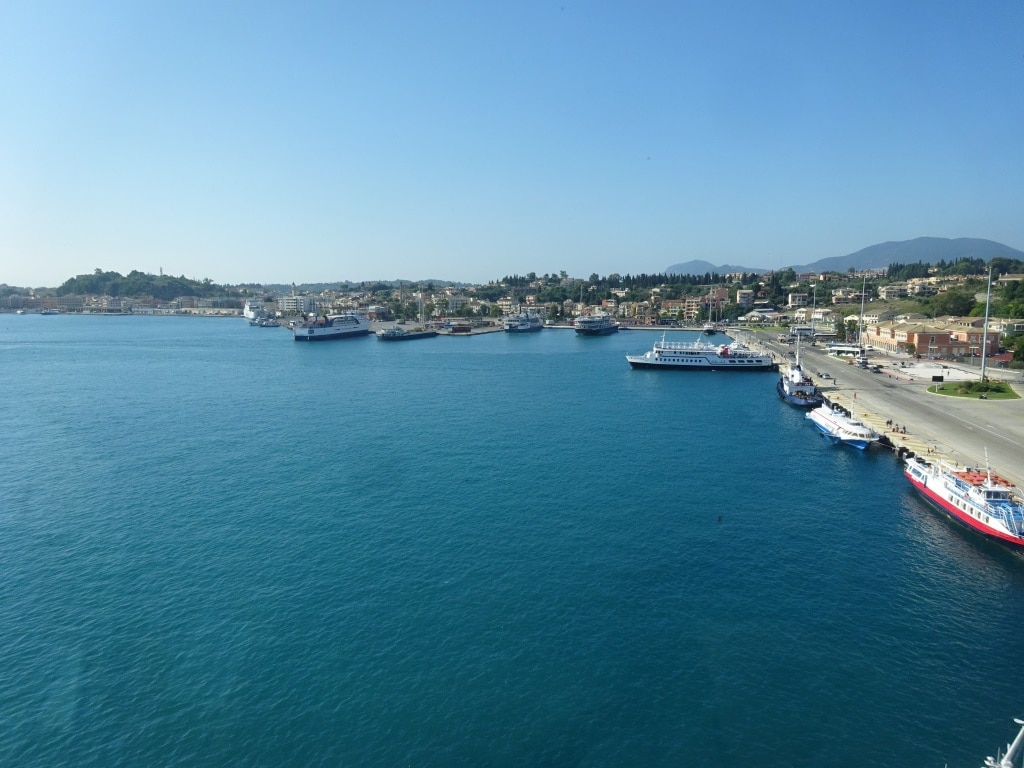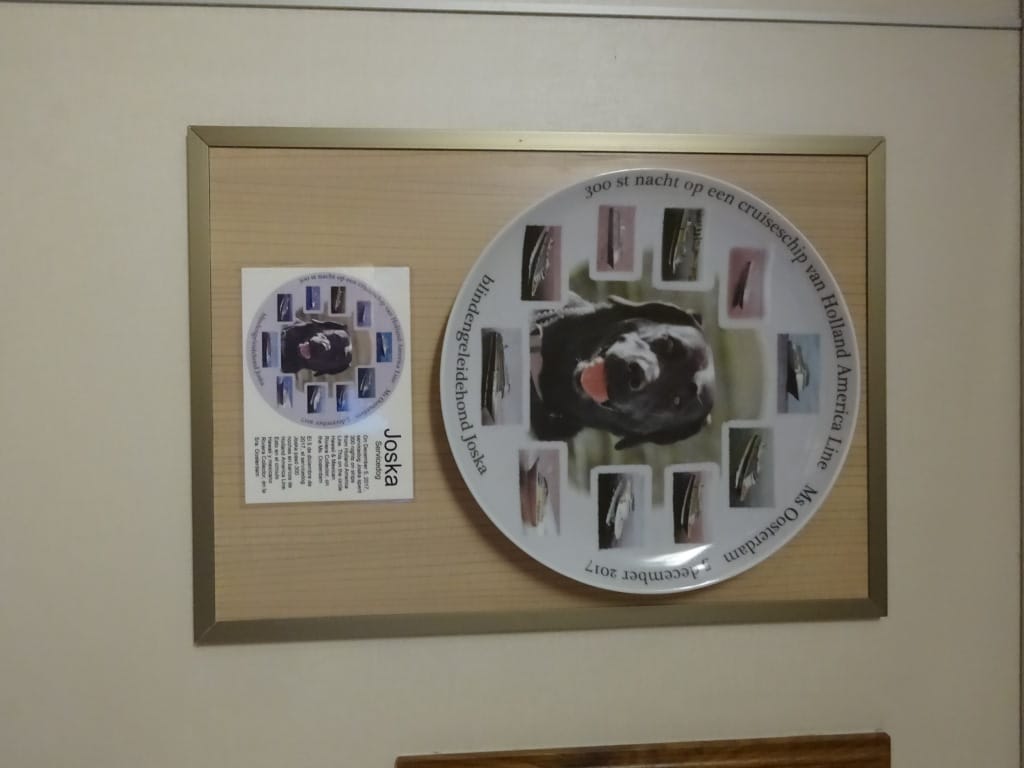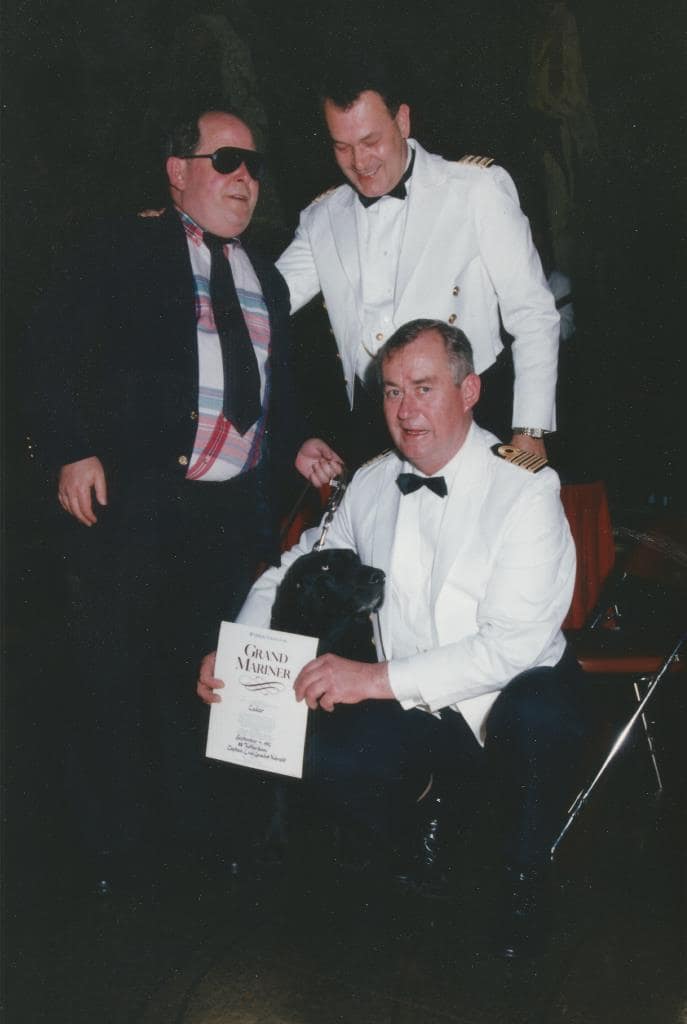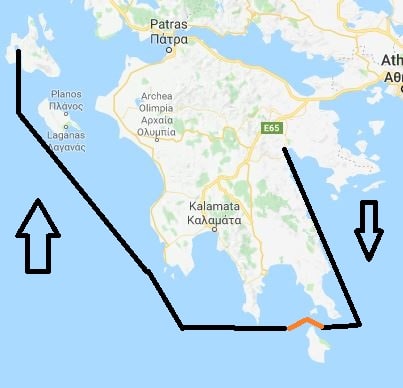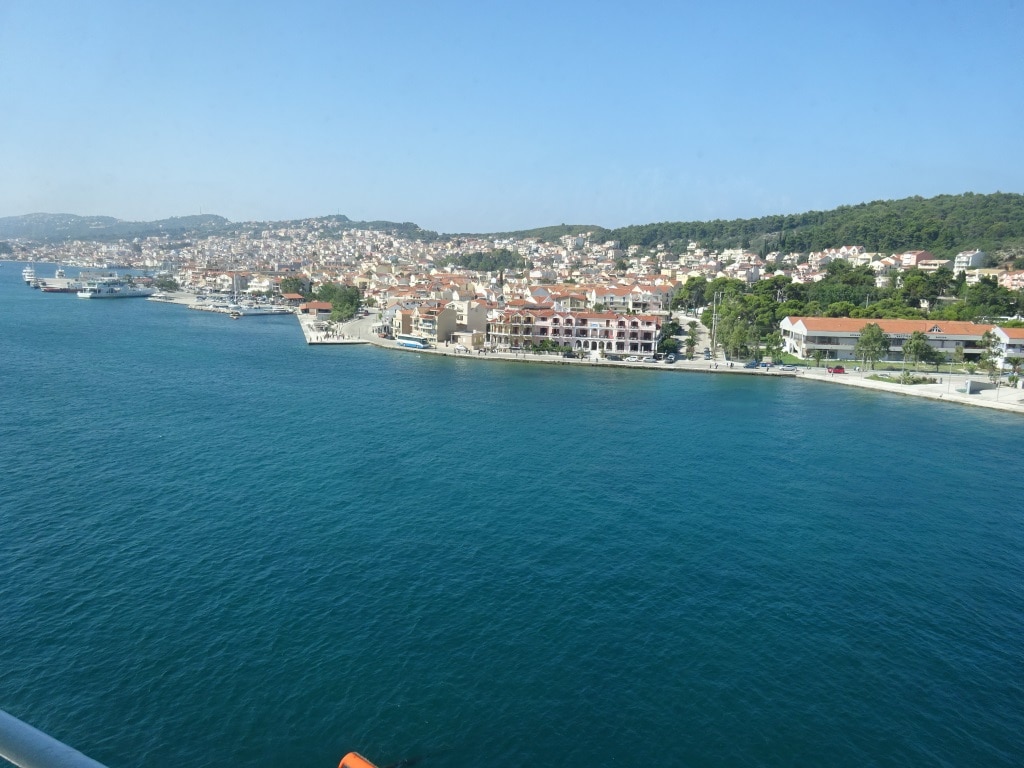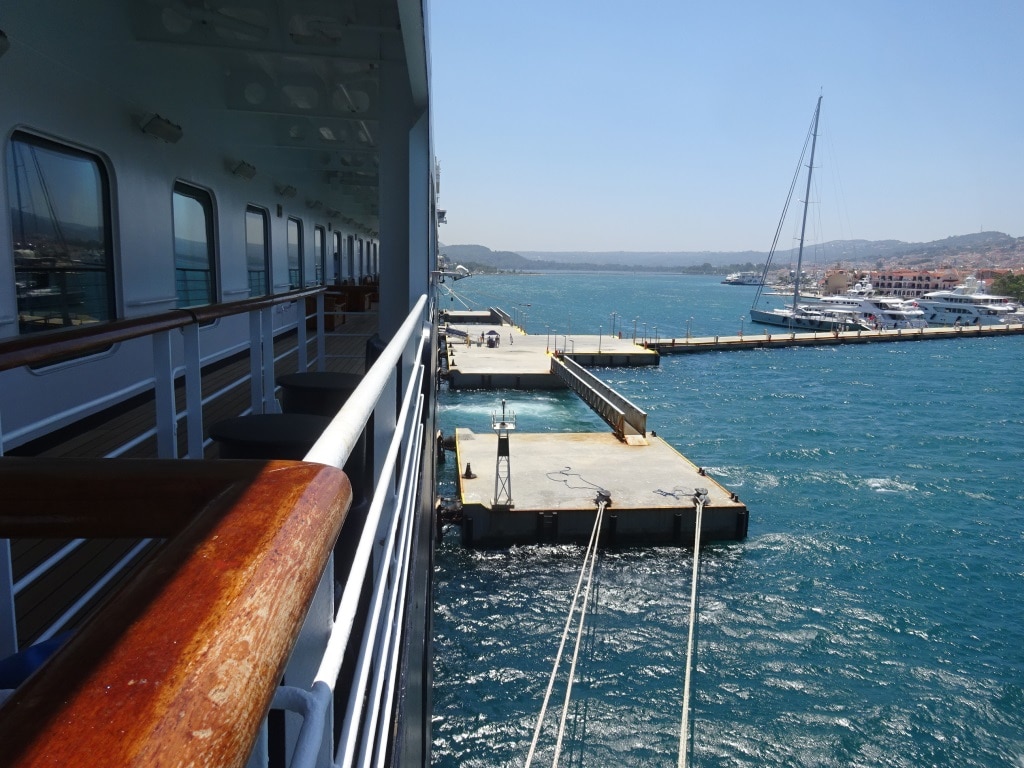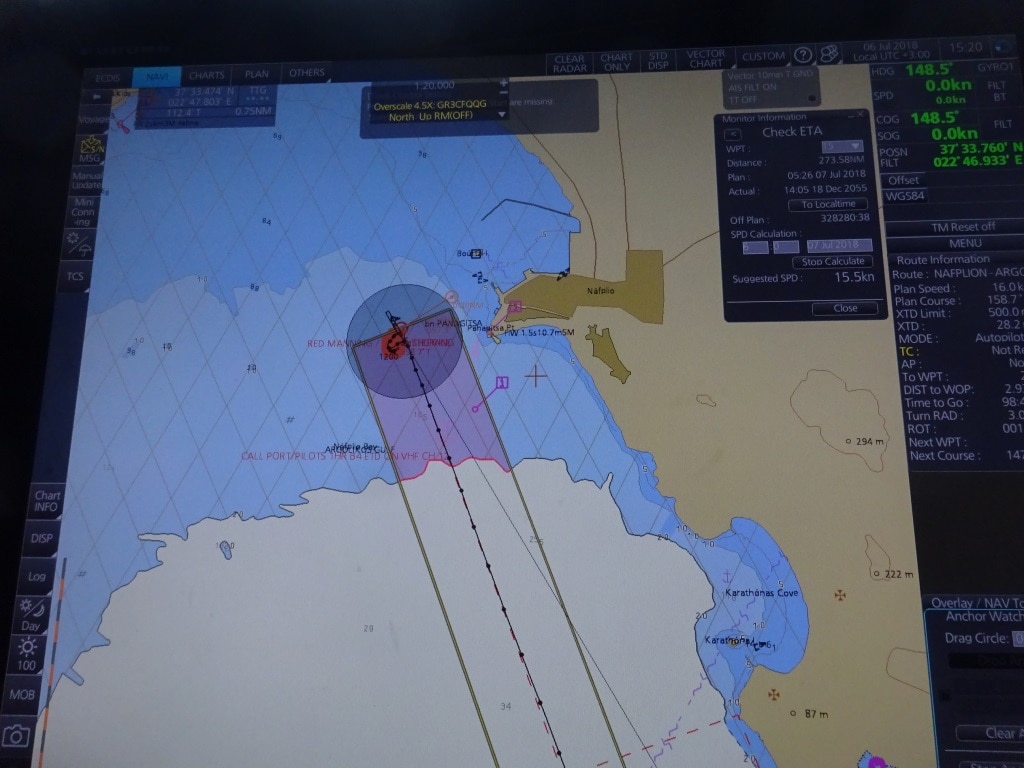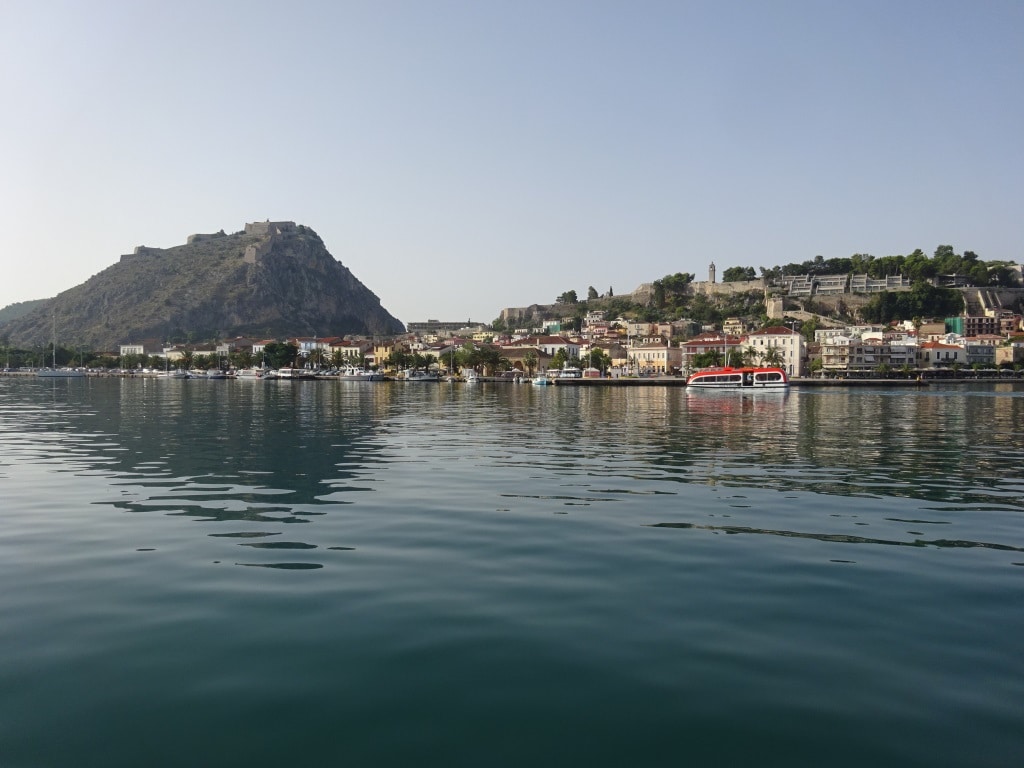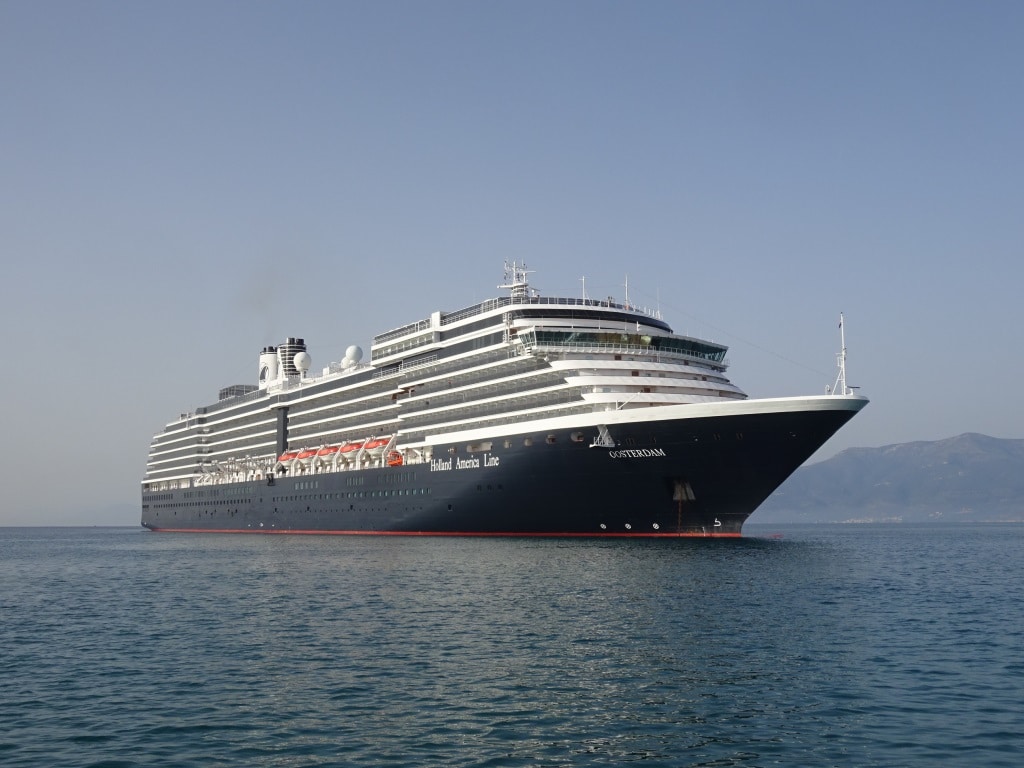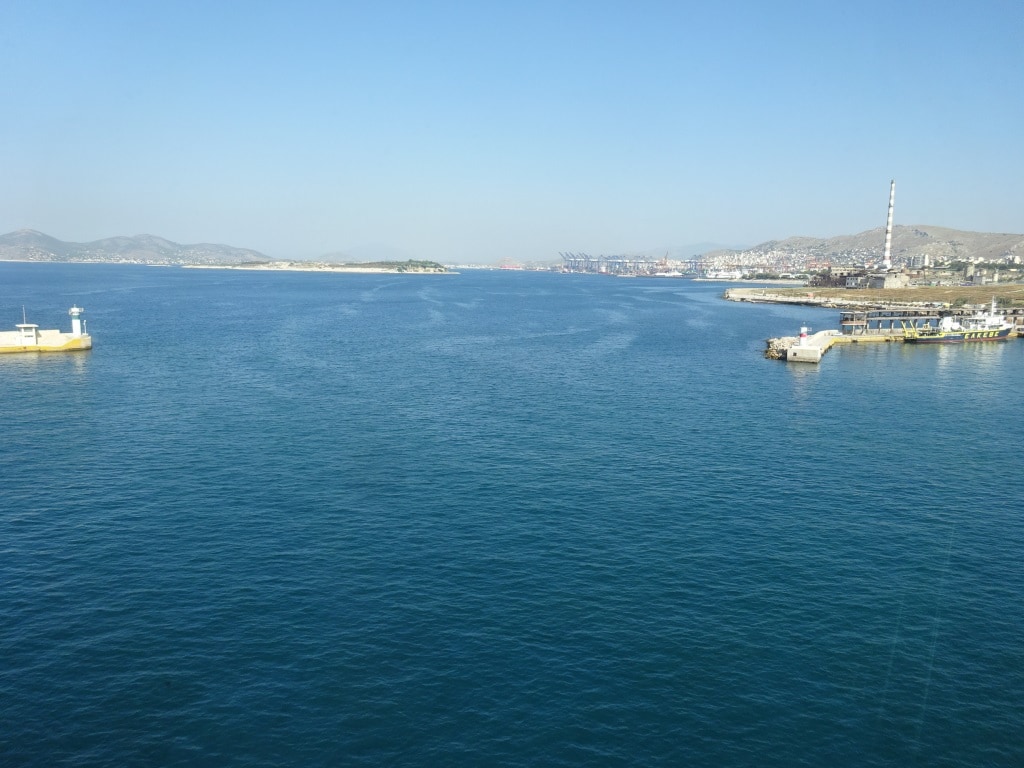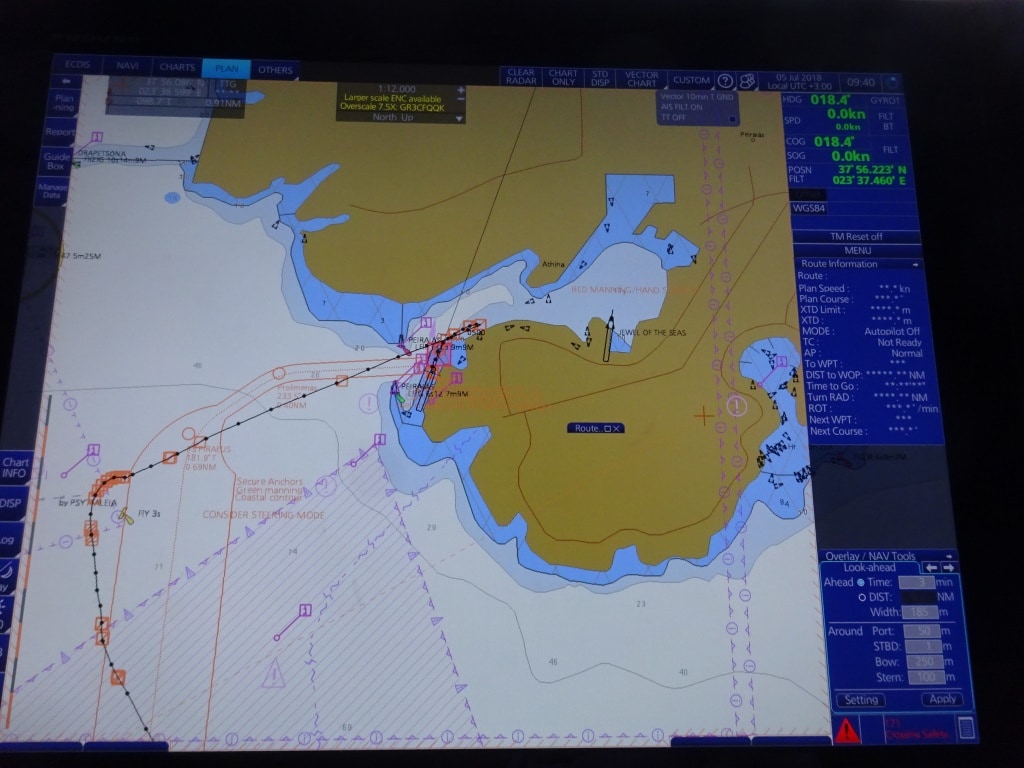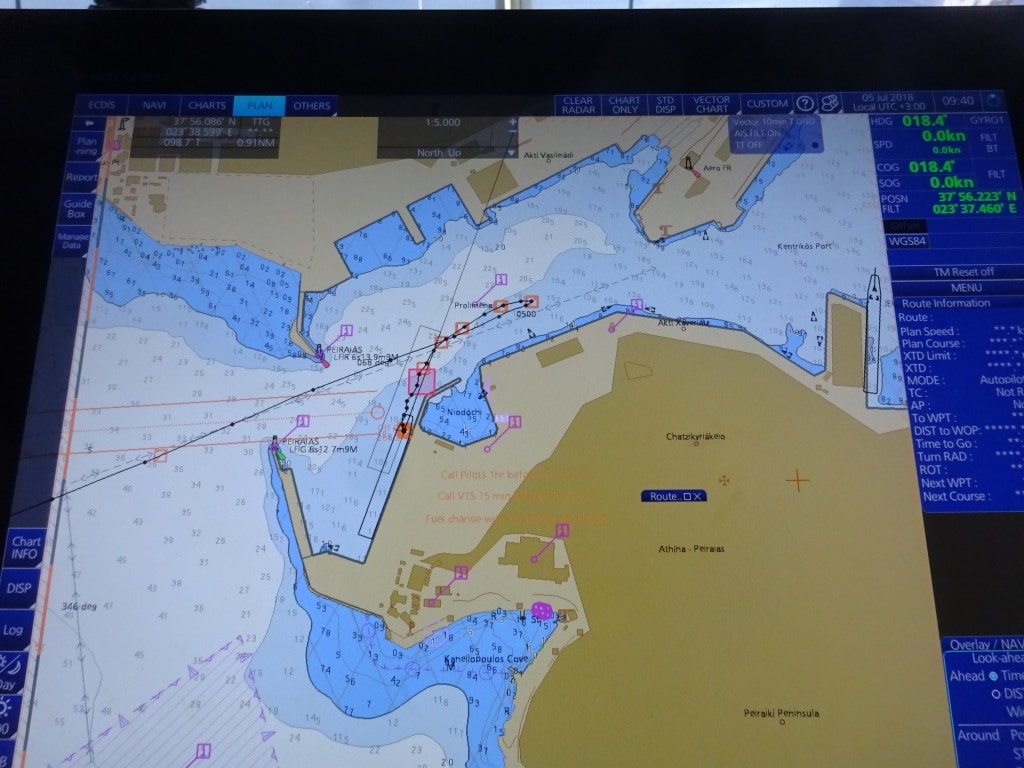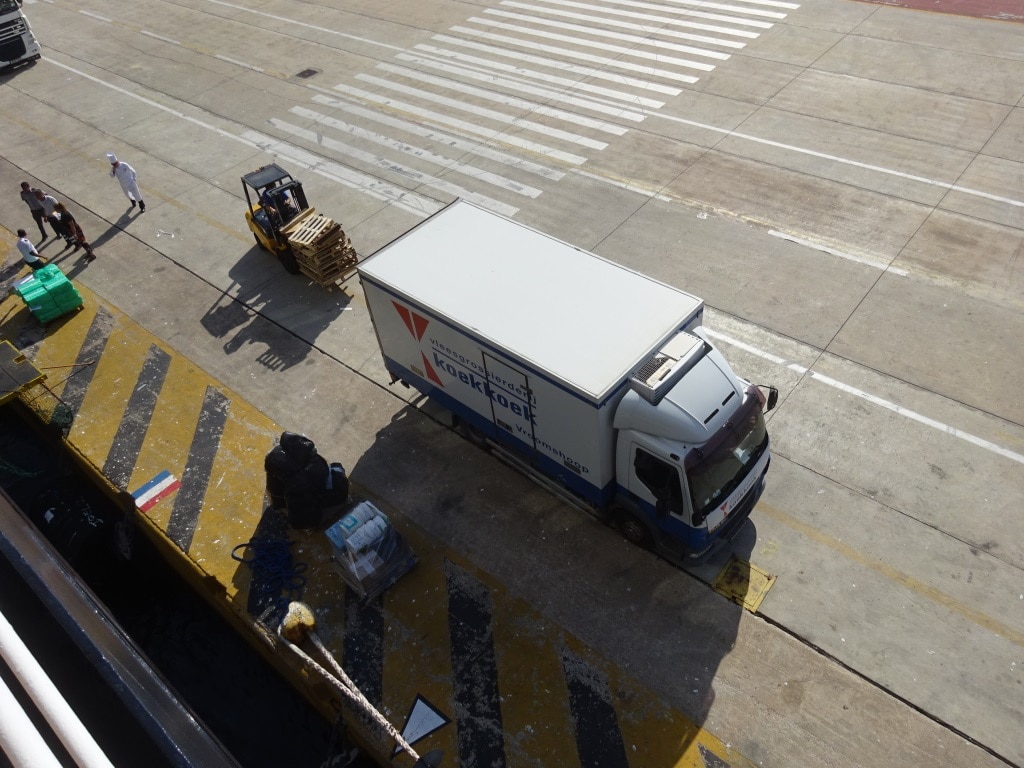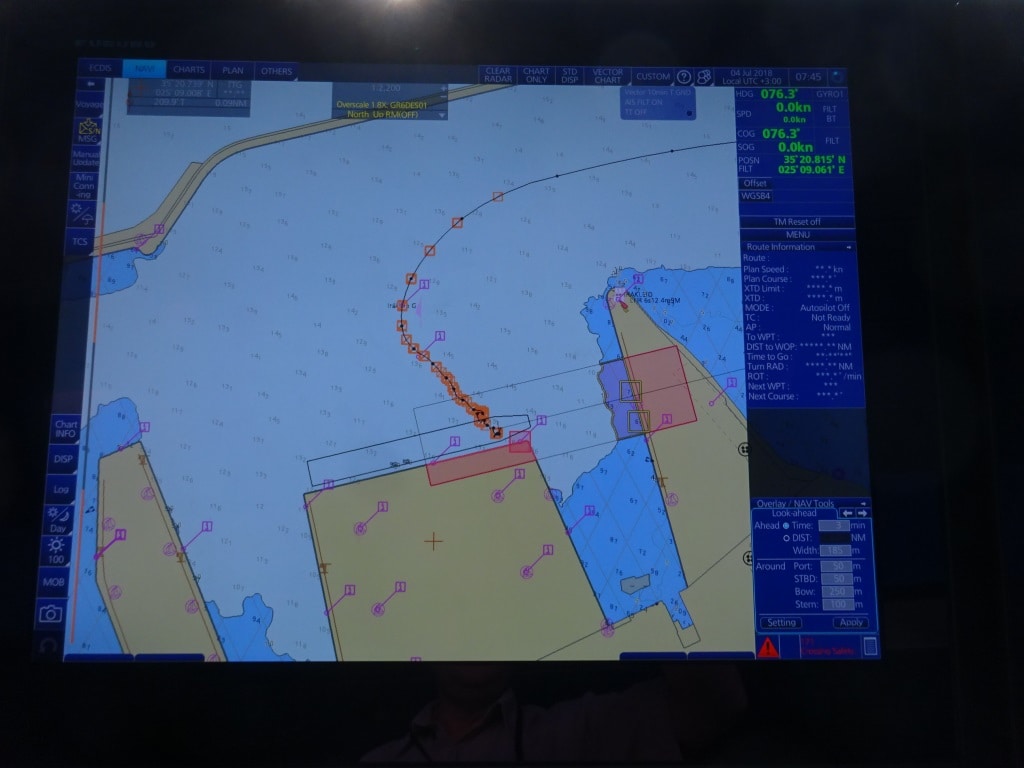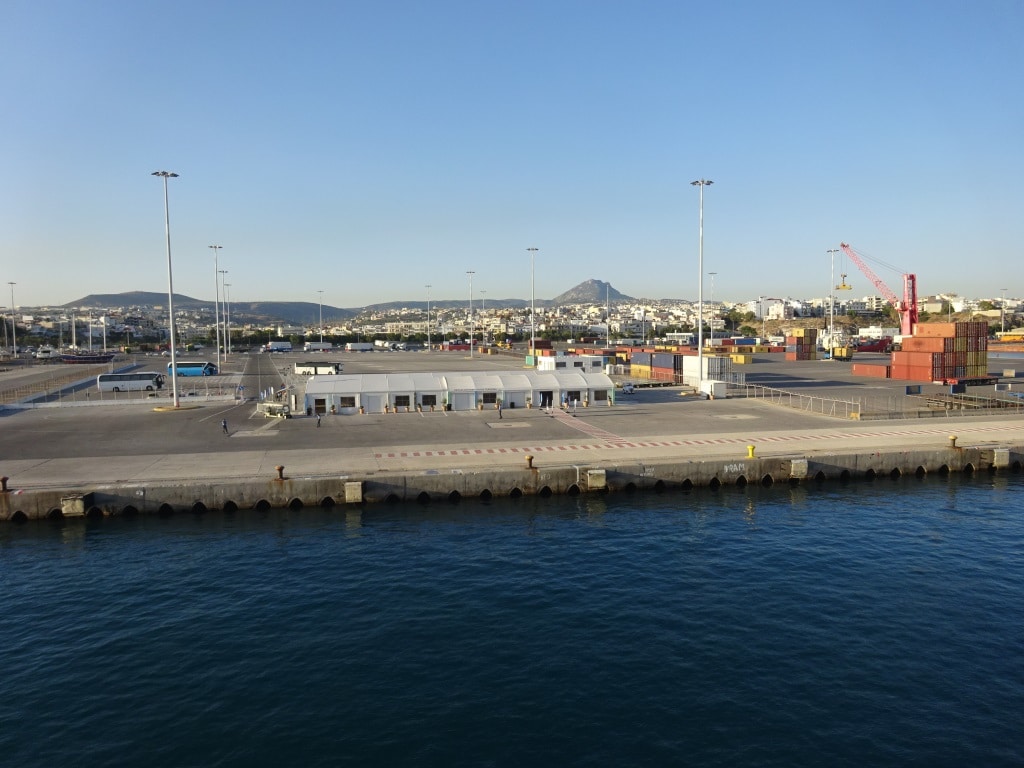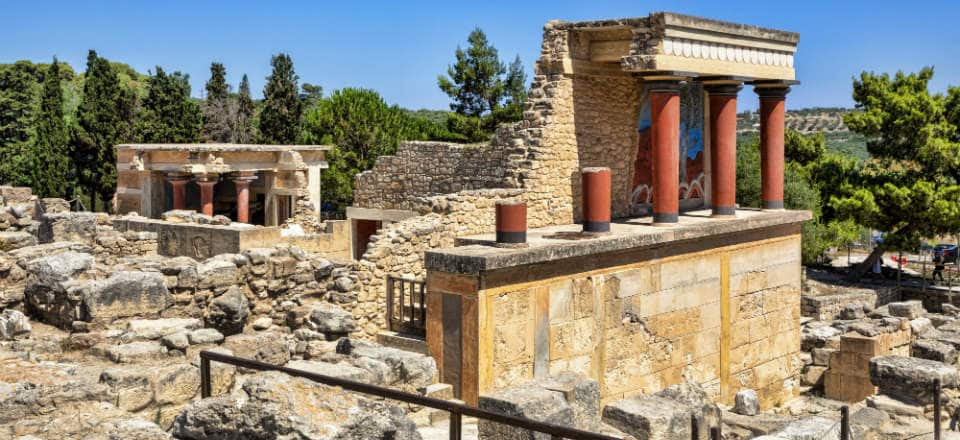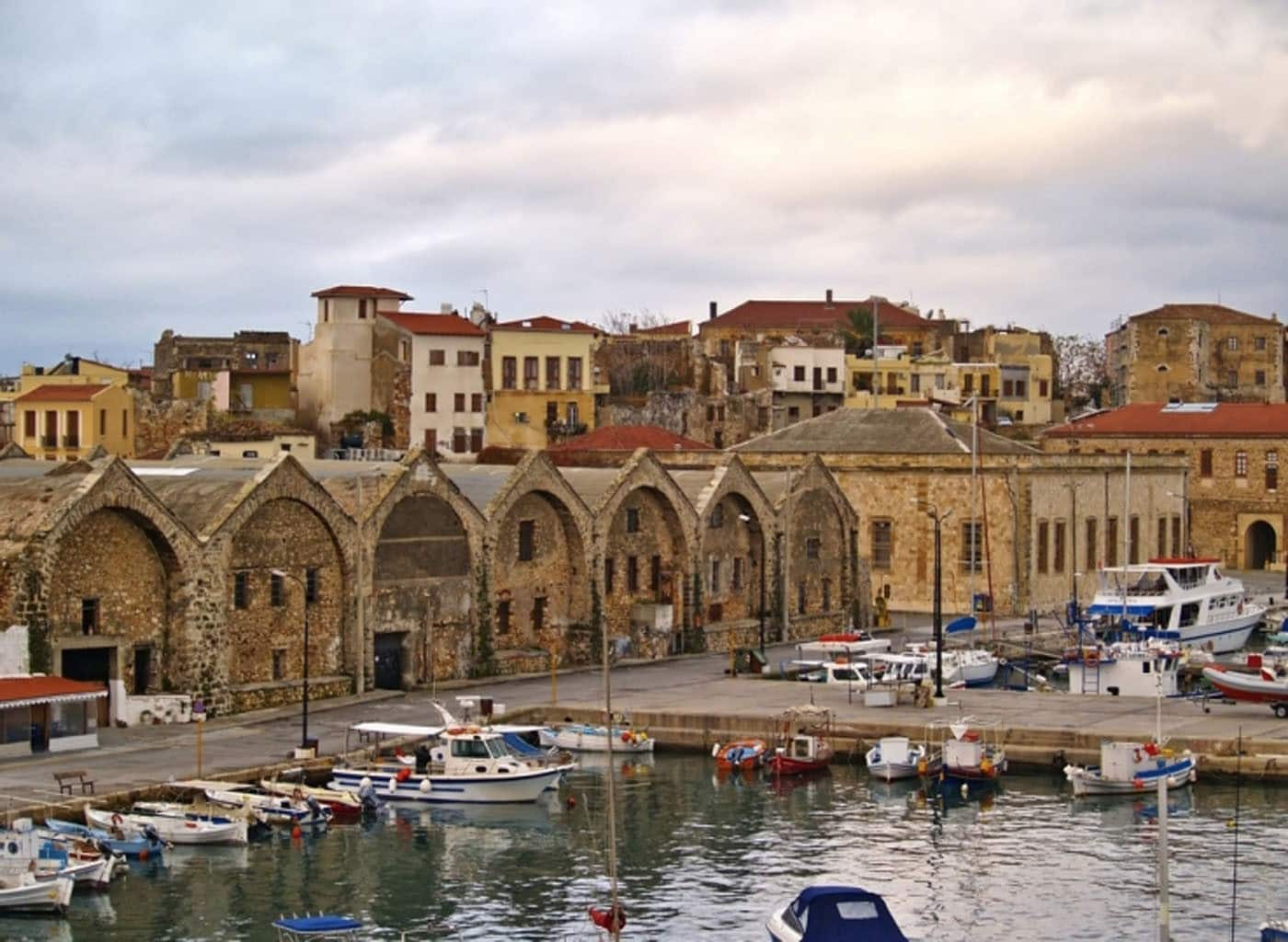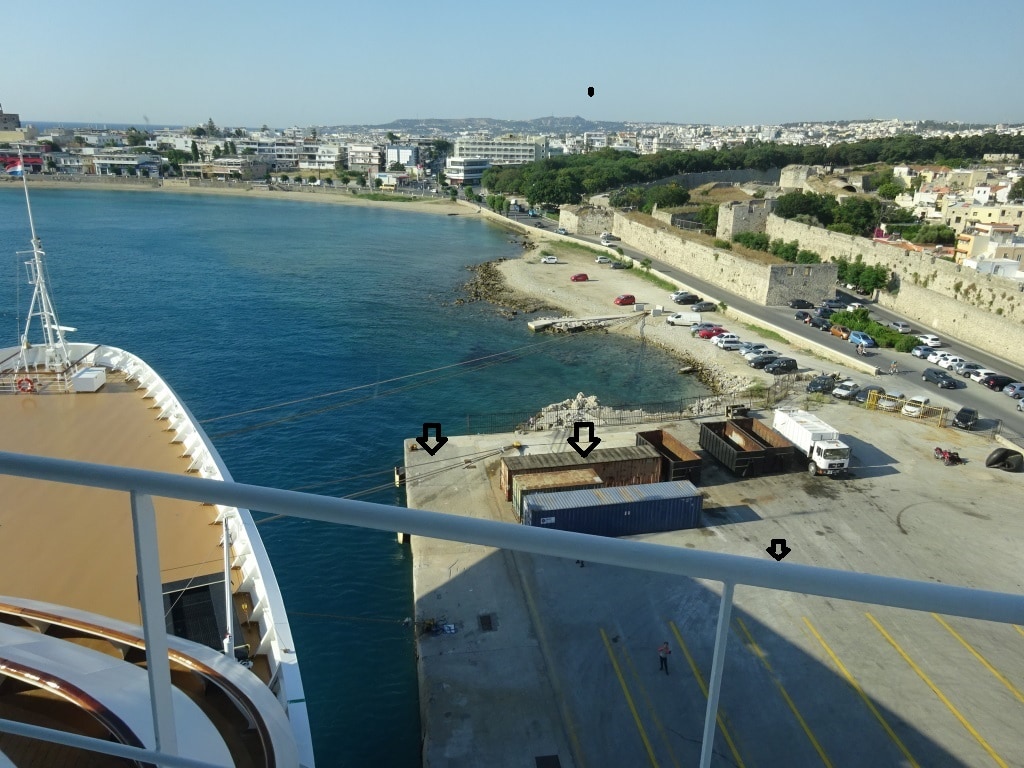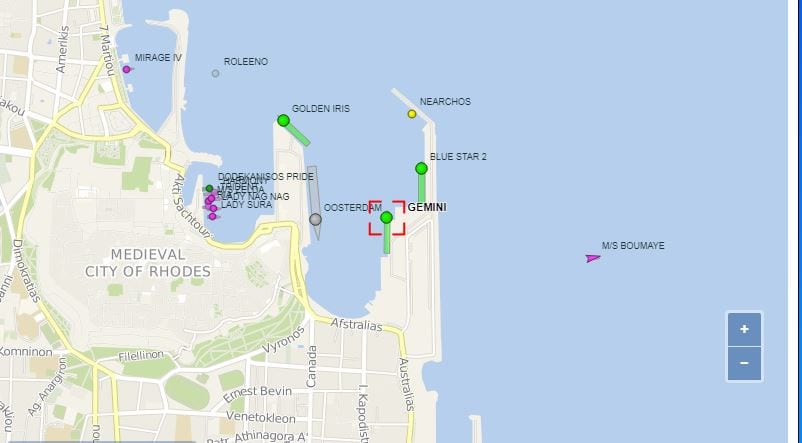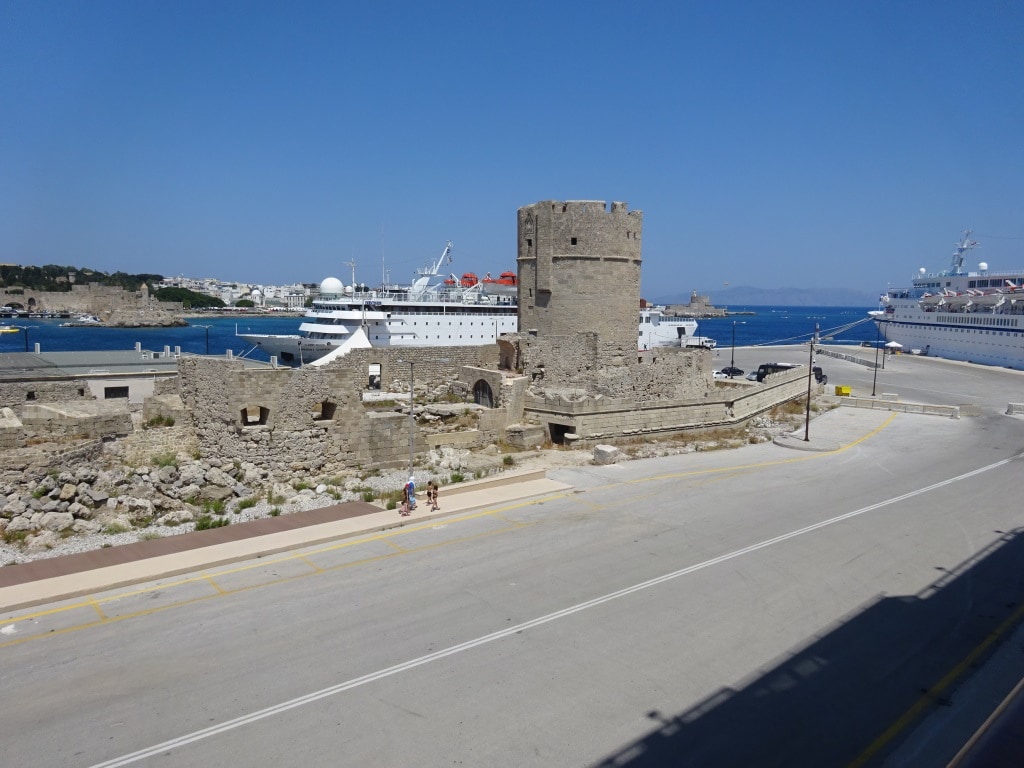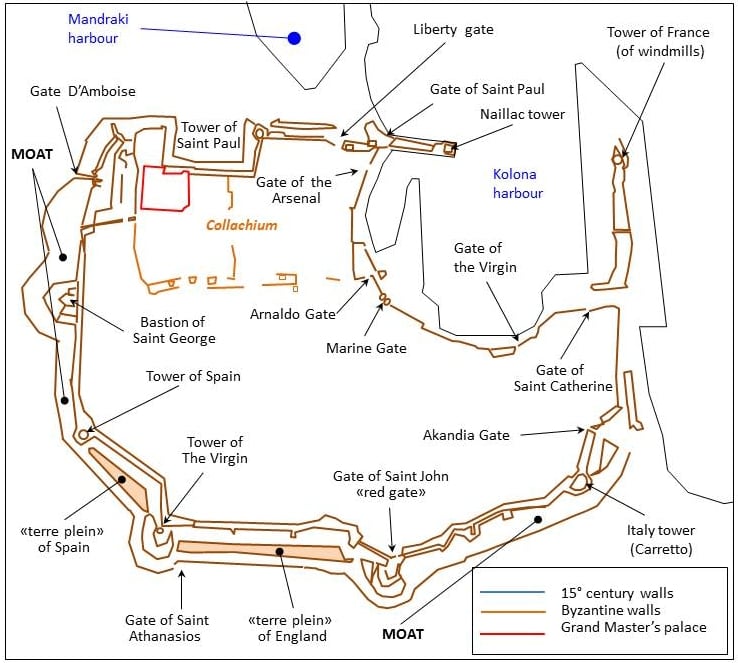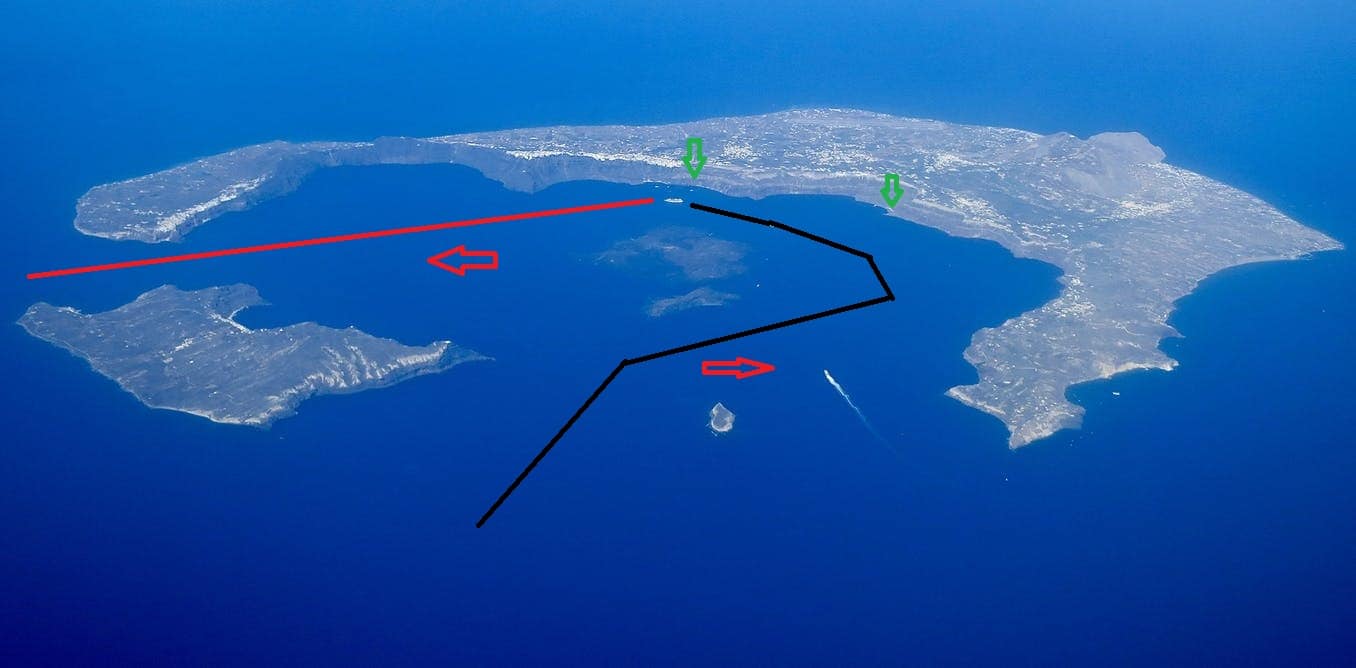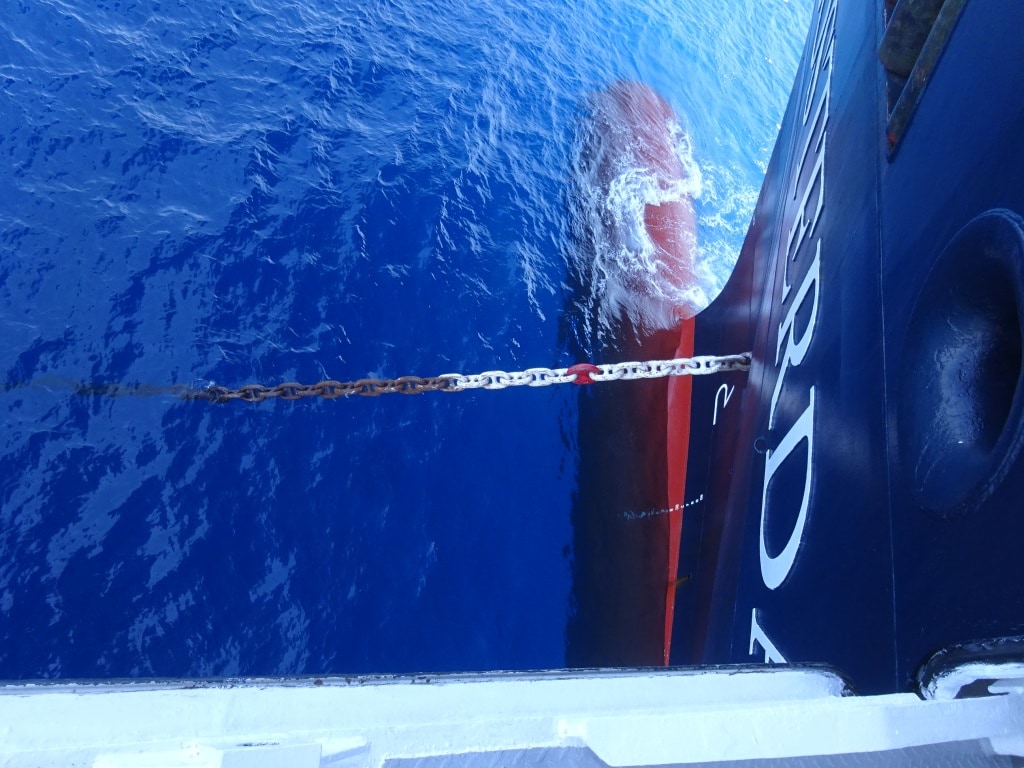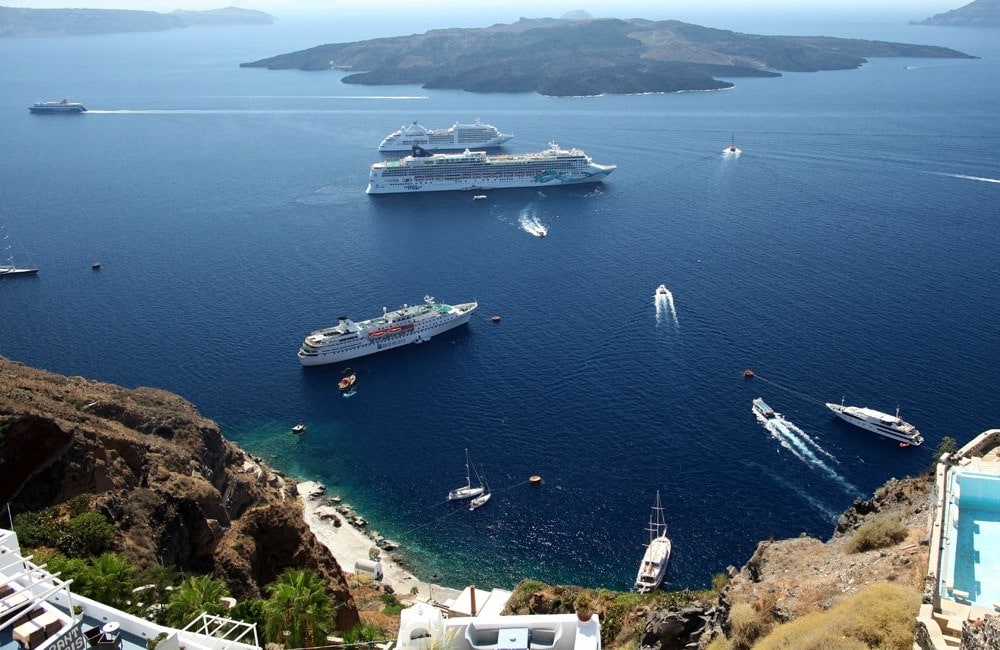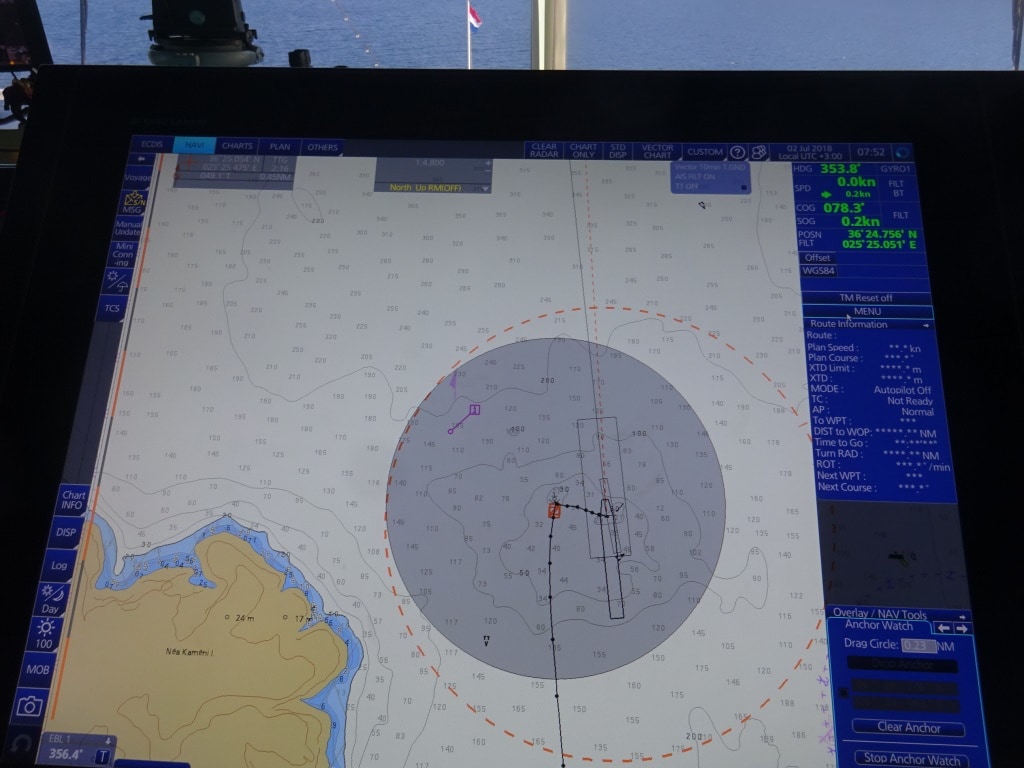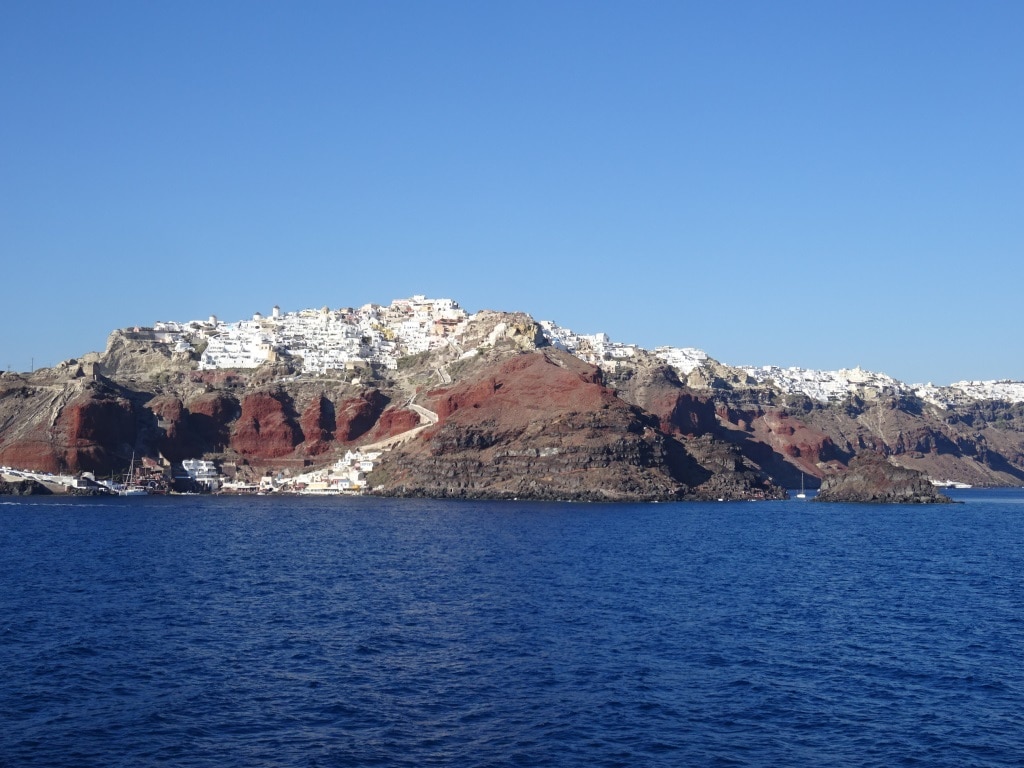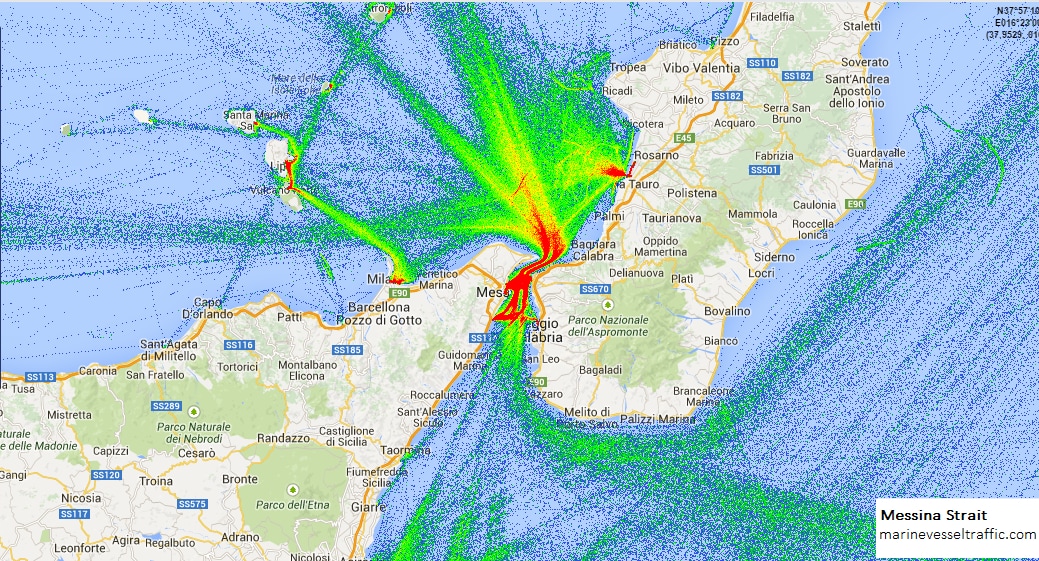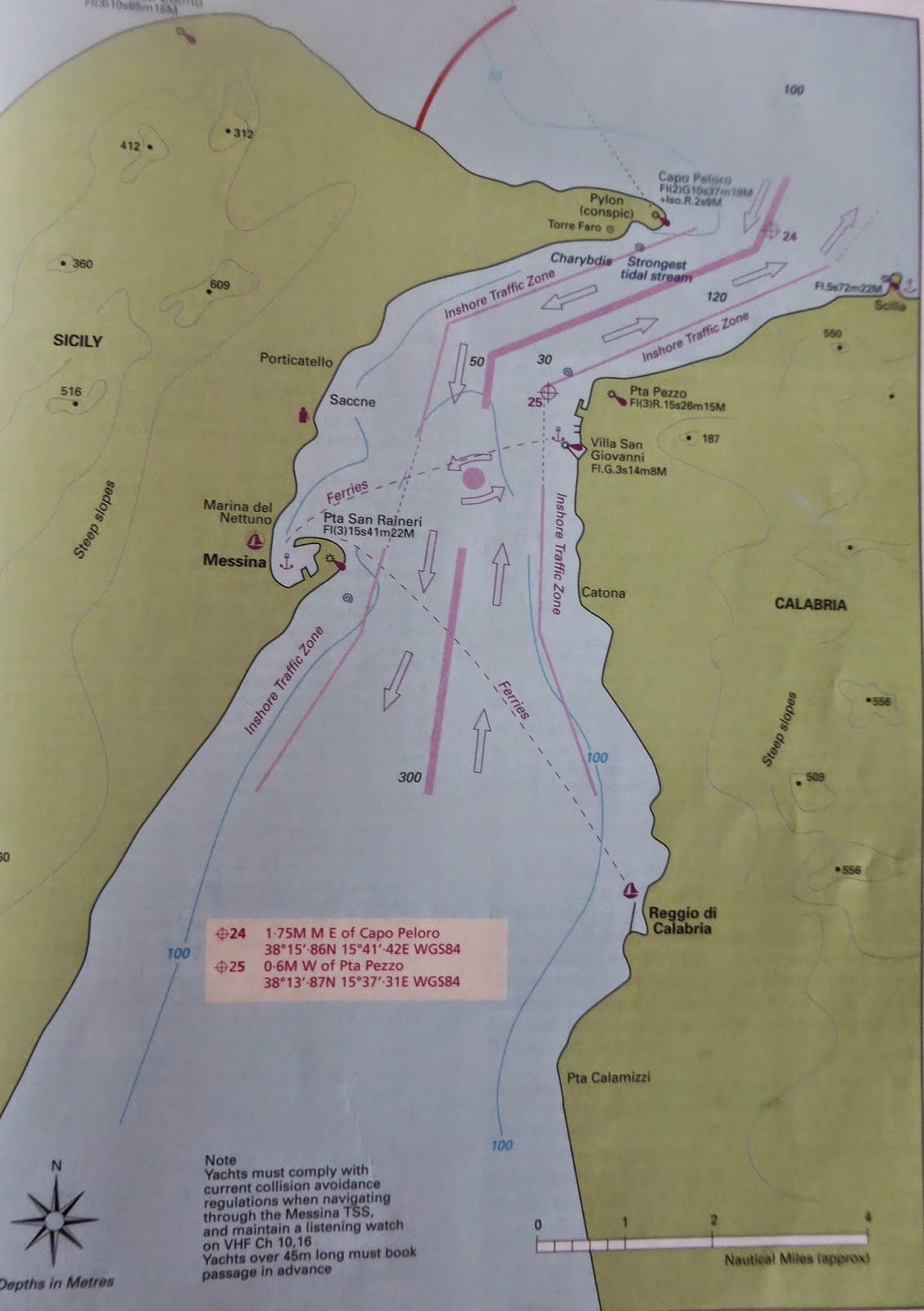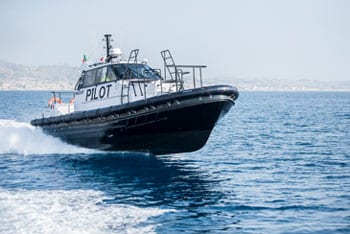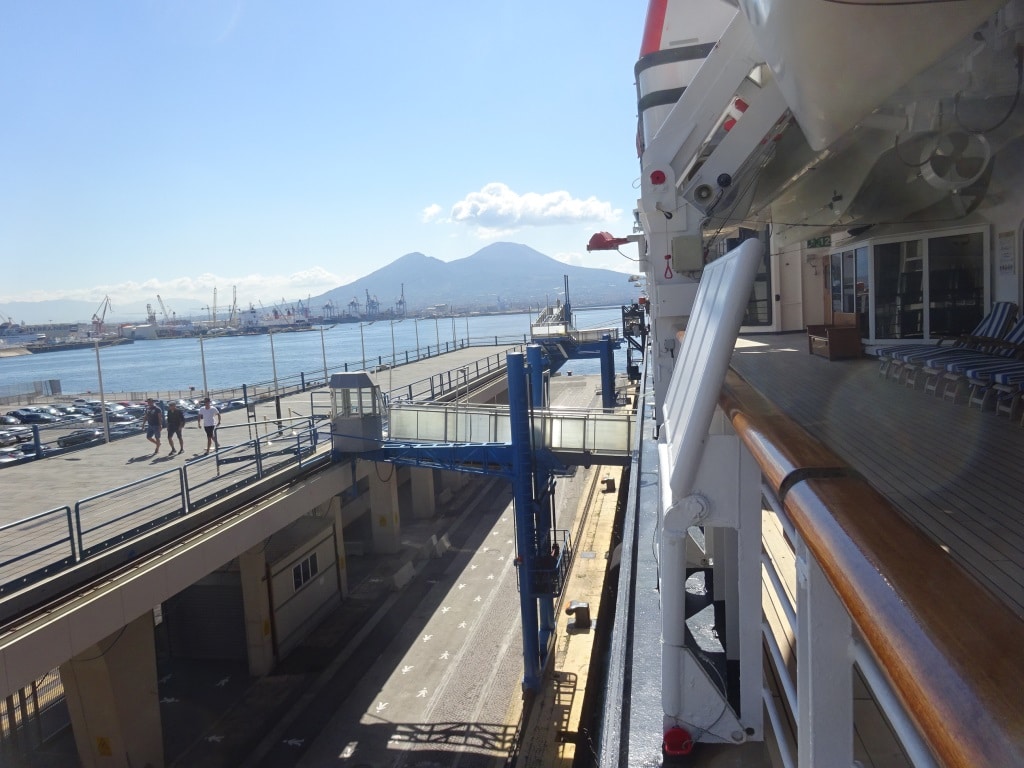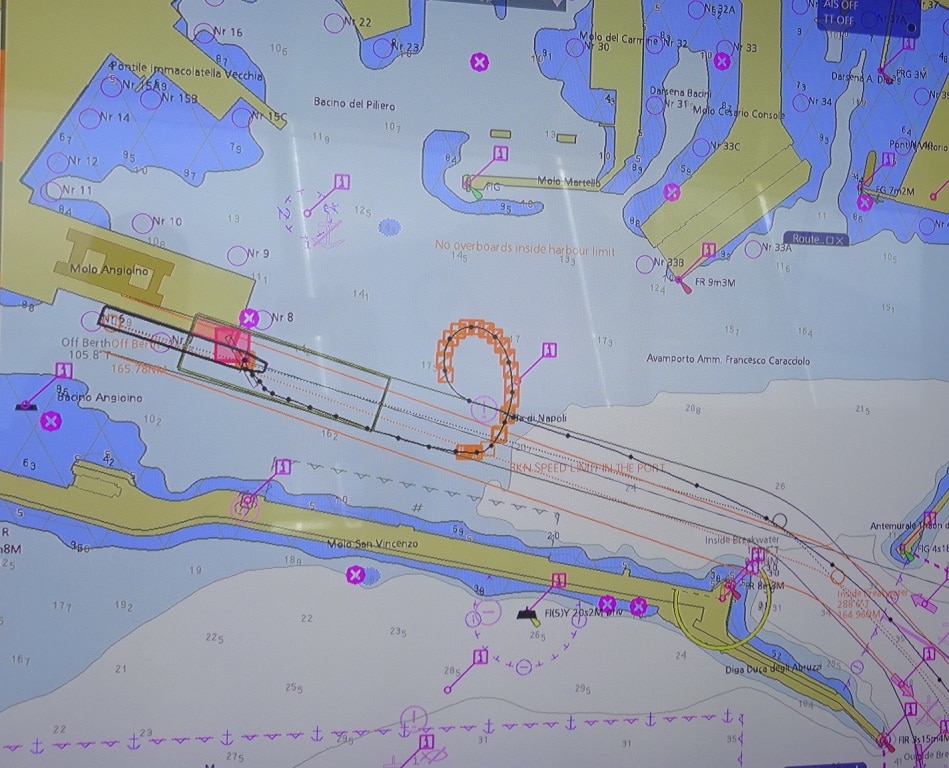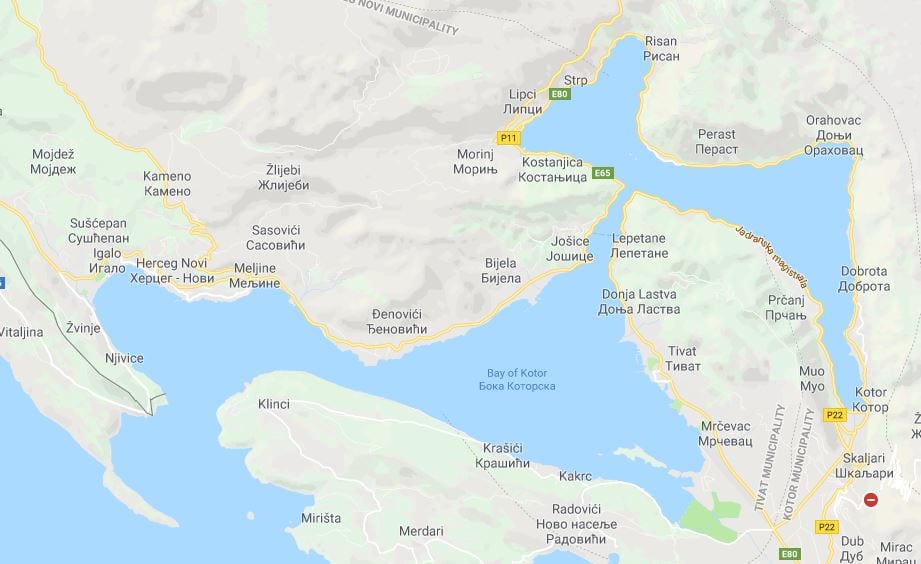
The bay stretches from the lower left – open sea, to the far right. At the end is the town of Kotor. (Thank you Google Maps)
Kotor has always been a sort of hidden gem in the cruise business, but was visited by small cruise ships and private yachts even before the 2nd world war. Then the troubles with the breaking up of Yugoslavia came and until that was settled there was no cruise ship traffic all. Now the industry is booming and every day in the summer there are one or more cruise ships present. Today there was us and the Seabourn Odyssey and we had the dock. Guests do not always realize how lucky they are, that the company can secure a dock. We do so many different cruises that we are never the “senior” ship calling who can get preference because it comes in every week. So we need to have a bit of luck. Today it was easy, we were with Seabourn which is our sister company and things can then be arranged in house. The Oosterdam docked until the departure time of 14.00 hrs., then the Odyssey who was at anchor and ran a tender service went alongside as soon as were gone.
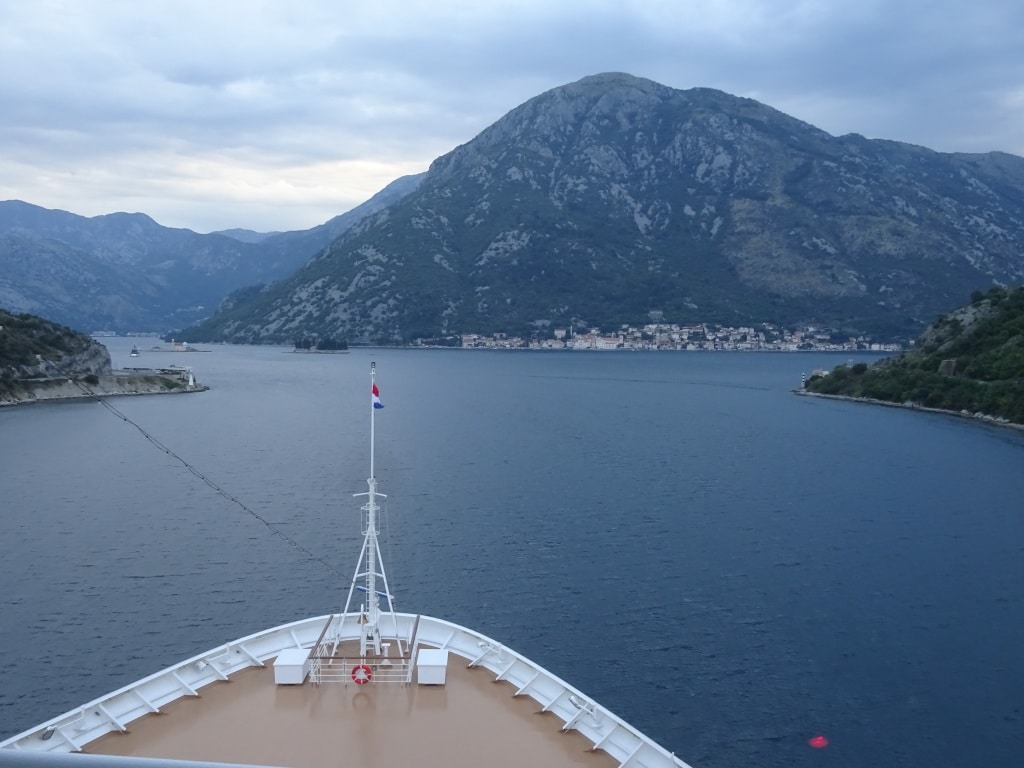
The narrow passage in the Gulf of Kotor. This was at 05.30 in the morning, I was already up and about as at the moment I am teaching the deck cadet how to do stations and how to lead the Bo’sun and his team with the mooring ropes on the bow.
Sailing into Kotor is one of the most scenic arrivals that there are. If you like ice and trees then Glacier Bay will win. But if you like to look at villages, old and new houses, fortresses and churches perched against the hill side, and then Kotor ticks all the boxes. Going in was early today as it takes nearly two hours from the pilot station to the dock but worthwhile to get up for. For those who did not want to do that, the same thing could be seen on departure but due to the lay out of the Gulf of Kotor sailing in gives a better look.
Most spectacular is the narrow sail through near Lepetane. The gap is just over a 1000 Feet wide and sits under and angel of 90o onto the rest of the Bay. In width is comparable to Seymour Narrows north of Vancouver. There they have the current, here they have the wind. Because of the lay out of the Bay, (according to experts it is not a bay but a Rija or submerged river canyon) even a gentle breeze can blow up to storm force as the steeps mountains on either side compress the wind into a narrow beam. Thus everybody on the bridge was completely focused and looked for the smallest white cap on the water to see if the wind could suddenly pick up; because if it hits the ship while coming out of the gap, the rocks on either side are very near. Today we were lucky, we had some wind, but once around the last corner it was a gentle sunny day. The predicted rain only arrived after we departed.
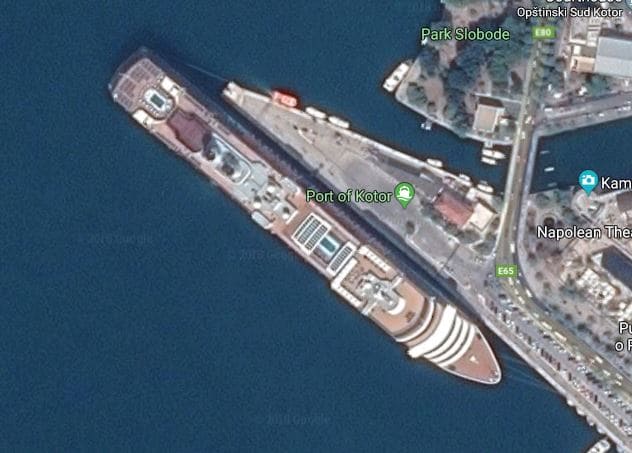
I found this on google earth. A Vista Class ship alongside.. See how far the stern overhangs the dock.
The guests did like the port as nearly all 2000 came back in the last hour. Reason for us on board to rejoice because if we had been tendering…… then we would have had very long lines as the tender service cannot process that number at the same time; even with four docking platforms going. So we were happy that we were docking. What the guests do not realize is that happiness on the bridge is tinged with concern as we do not fit alongside. The part of the pier that is deep enough is Prinsendam size not Oosterdam size. Thus we have to be creative with the ropes at the stern and the captain kept the Starboard Azipod going at all times, to keep the stern pressed against the dock.
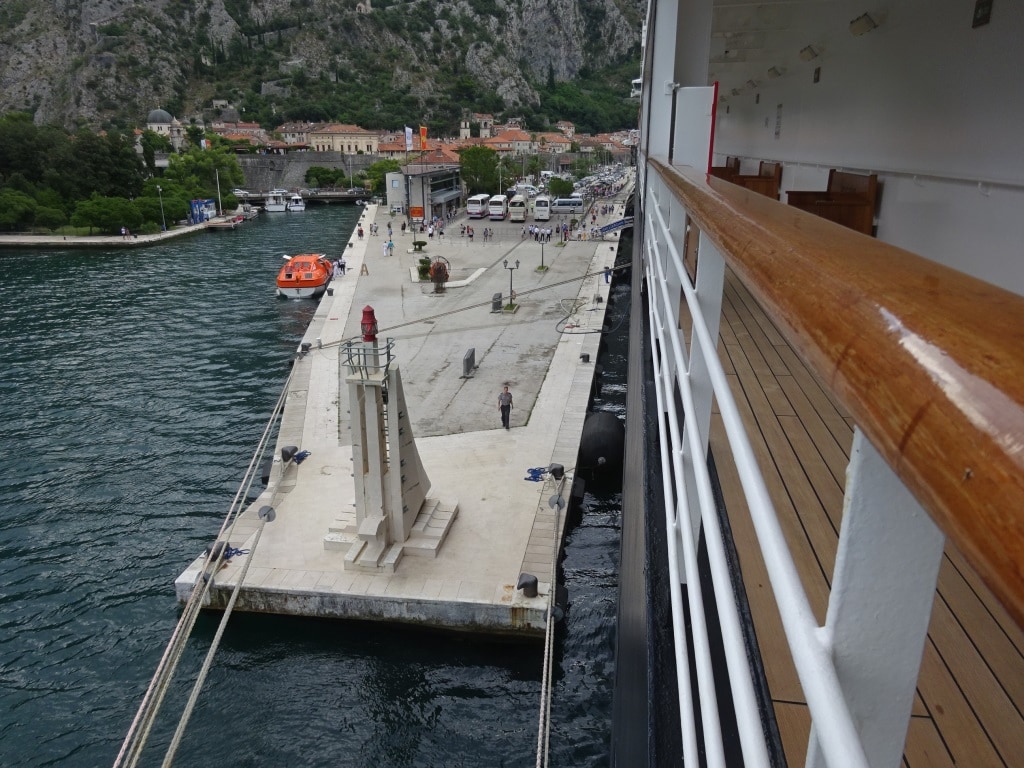
Creativity by the officer on the aft mooring station. As we have only lines leading forward, two lines were led around a bollard on the opposite side and then tied up onto the ship itself. What we can do as we have “Dutch bollards” in recesses in the ships hull.
In the meantime, the guests crossed the street as the old city was less than 300 yards away. We cannot do much better than that.
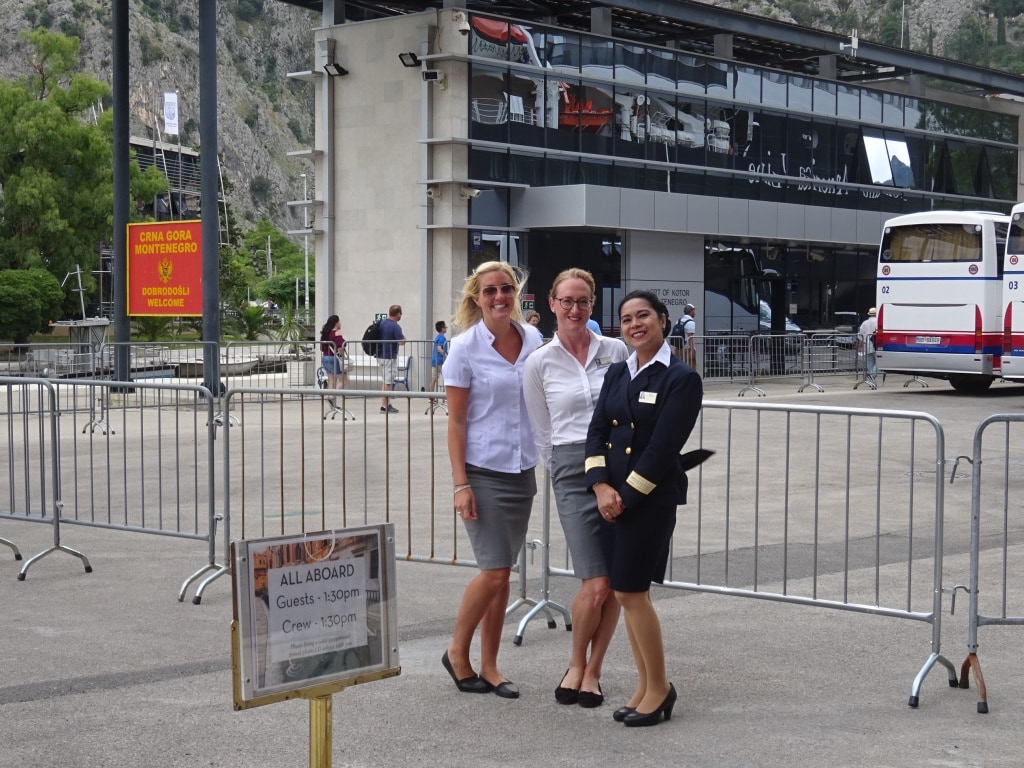
Friendly crew at the gangway. Another Holland America Line tradition. At the gangway we have officers wishing the guests a nice day ashore. This time Front Desk attendant, Cruise Director and Guest Relations manager.
Kotor has been there for a long long time, but the Fortress and the Walls, which are perched against the cliffs, are mostly from the Venetian times of the 1500’s when Venice was by far the most powerful entity in the Mediterranean. A pity we did not stay in the afternoon as the old town is a delight to walk through and sitting on the main square with a good glass of beer is an experience not to be missed. But we sailed early and in the morning my presence was required in the Main Galley. Not to teach the cooks how to cook but to teach them what to do when their cooking goes wrong.
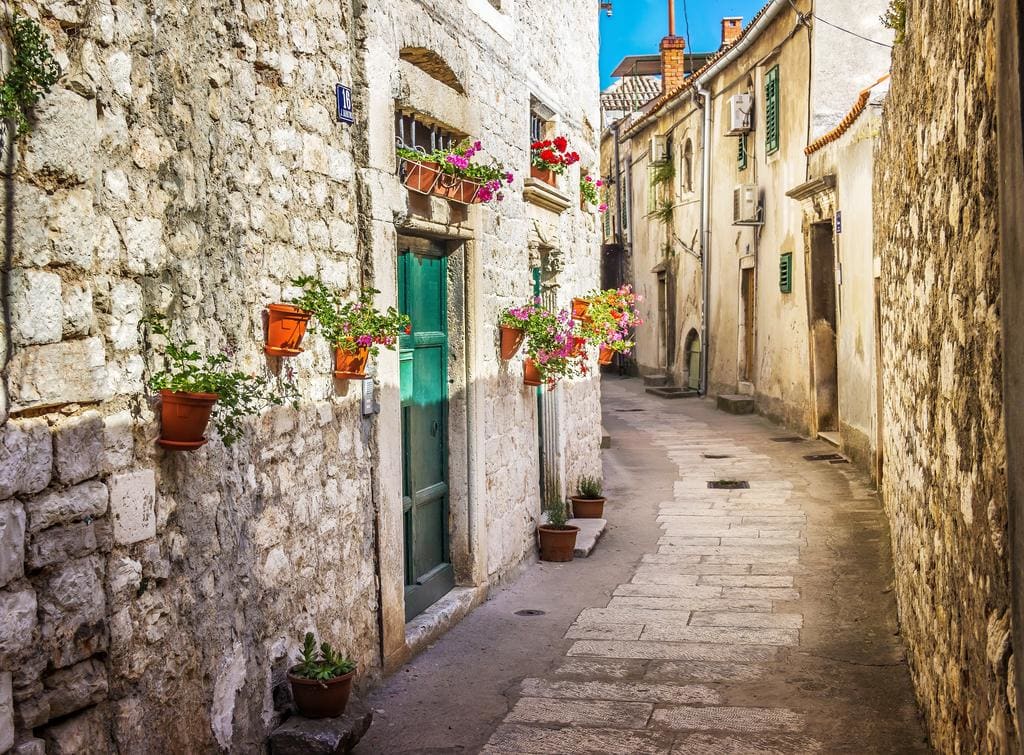
One of the old streets in Kotor. The whole downtown area looks like this and is a delight to walk around in and to get lost in.
We left Kotor at 14.00 hrs. as it is a tight schedule to make it to Venice on time. Here we stay overnight. Tomorrow afternoon and evening the guests of this cruise have the chance to see the place and then the day after tomorrow the new guests arrive; although we have quite a few CVG guests on board who are doing back to back cruises, or have strung 3,4, or 5 together.
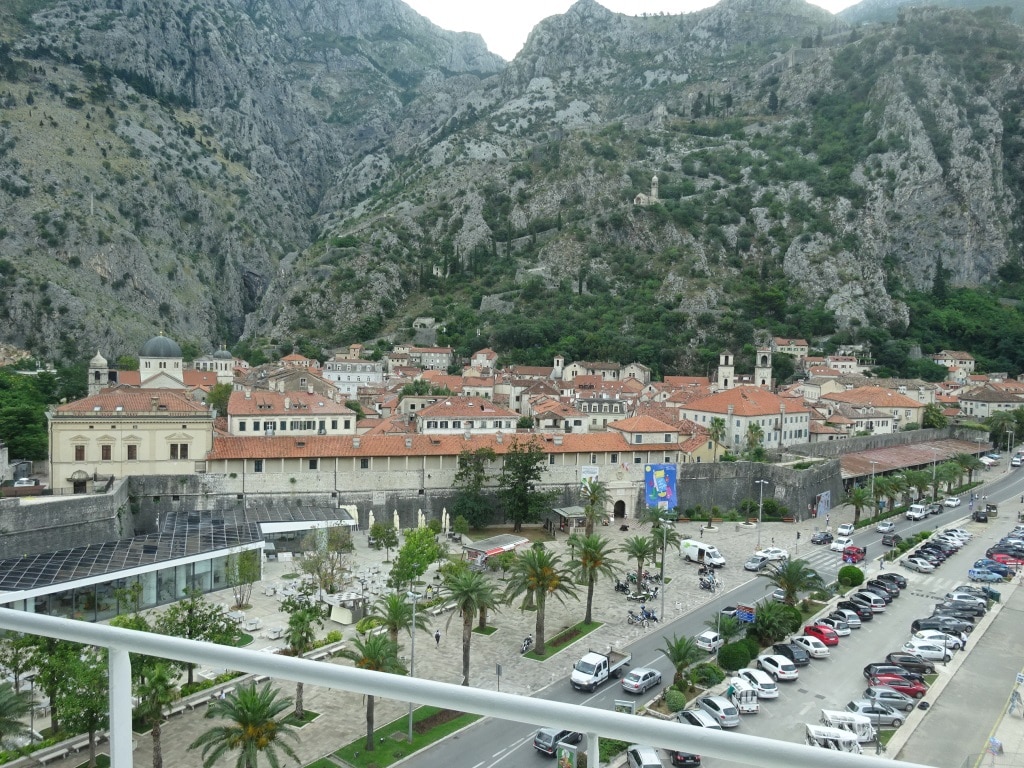
The old town of Kotor right across from the bow of the ship. Kotor is a UNESCO world heritage site; is very well preserved and since there is peace in ex- Yugoslavia, a a lot of restoration of the old buildings is taking place.
Weather for Venice. Partly cloudy with 28oC or 82oF. The 2nd day there will be a 50% chance of rain.
